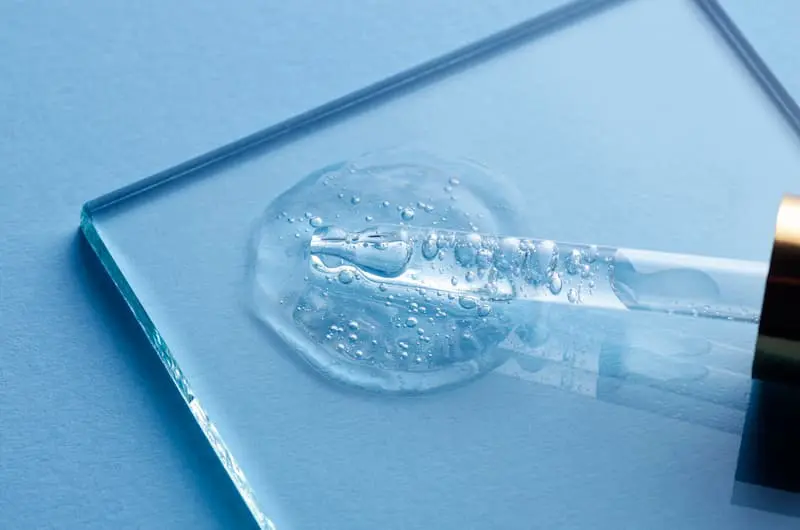Guys, it’s normal to wonder how your penis size racks and stacks compared to other guys. You’ve been fed the idea, either from porn or more mainstream media, that the size of your penis determines how well you pleasure your partner or how much pleasure you receive during sex.
Nothing could be further from the truth. A longer penis doesn’t guarantee you a good time in the sack. Any ‘meh’ sex you’re having likely has nothing to do with your length.
Most of you don’t have a size issue. The average flaccid penis is about 3.6 inches from the base of the pubic bone to its tip and five inches when erect.
Medical professionals don’t recommend penis enlargement surgery for purely cosmetic reasons. Sometimes, it’s medically necessary in cases of disease, malfunction, or injury. Whatever the issue, changing your penis length typically involves surgery and is permanent, meaning if you don’t like it, you have very little recourse.
If you’d like a bigger penis, you have surgical and non-surgical options available. Some surgical options include severing your penis ligament and implants.
Let’s compare modern surgery options to the current and best non-surgical penile enlargement option, hyaluronic acid (HA) filler.
Table of Contents
ToggleSurgical Penis Enlargement Options
Penile surgery is a big deal. It involves cutting on a sensitive, veiny area. It’s painful and risky, requires extensive recovery, sometimes involves going under anesthesia, and is expensive.
Penis surgeries aren’t rare. The National Institutes of Health (NIH) collected data on over 63,000 performed between 2005 and 2012. Cosmetic reasons seem to be the rarest reason to get them. Read on about your options if you’re thinking of going the surgical route to enlarge your penis.
Let’s start with the most widely used surgical procedure to make a penis look longer.
Ligamentolysis: Suspensory Ligament Division Surgery
A ligament connects your penis to your pubic bone. Surgeons can cut that suspensory ligament, causing your penis to hang lower. It’s still the same length, mind you, but this surgery gives the illusion that you’re working with longer junk.
Some surgeons then move skin from the abdomen to the penis shaft to help the penile skin better accommodate the pulling from the hanging penis.
That severed suspensory ligament no longer stabilizes your penis after it’s cut. The instability could cause injury during sexual activity. Also, your erection may no longer point up but down since the ligament isn’t able to help it lift.
And after all that, the ligament could reattach itself (and not necessarily in its correct place). This could result in a penis that is shorter than what you started.
Phalloplasty
Fat Grafting/Transfer/Injection
This popular penis enhancement procedure does not lengthen your penis, but it could make it thicker. Surgeons remove fat from a fleshy part of the body, like your inner thighs, flanks or stomach area, and inject it into the shaft of your penis.
Results vary and are often disappointing due to how fat reacts when transferred to another body part. Injected fat can die off, spread unevenly, or get reabsorbed by the body. These biological reactions cause lumps and bumps along the shaft (some as big and hard as golf balls) that may require additional surgeries to remove.
Additionally, fat transfers can lead to a penis that is awkwardly curved, unevenly shaped, or irregular. It can cause scarring, a soft erection (marshmallowy-like due to fatty tissue), and loss of sensation.
Tissue Grafting
As with fat grafting, tissue grafting can help with girth or shape issues but not length. Here, surgeons take skin and fat layers from another body part. They sew the graft onto the shaft of the penis.
Grafting can affect your ability to get an erection. It can also lead to scarring, shape deformities, and infections.
Penis Implants
Surgeons place material, like silicone, into the penis to produce a longer or girthier anatomy. Like other surgeries, there are risks of deformities, infections, implant rejection or erosion, loss of sensitivity, and erectile dysfunction.
Penuma
A specific type of penis implant called Penuma has gained traction in its field. It uses an FDA-approved, medical-grade silicone device to correct deformities and enhance length and girth for cosmetic reasons.
It’s important to understand that while the FDA approved silicone for medical devices, complications more commonly occur, causing pain or infection, and ultimately, the body will reject the implant. An NIH probe found that the same infection rates, deformities, curvatures, and length-shortening that exist for severing the suspensory ligament also plague this newer implant procedure.
Non-Surgical Penis Enlargement
From pills and lotions to vacuum pumps, hand manipulation, and weights, you have no shortage of non-surgical options for enhancing your penis length. Most are not effective.
Some increase blood flow to the penis, temporarily making it swell. Others, like pills, contain hormones or mood enhancers that can actually depress your mood, make you feel anxious, or hallucinate. Some chemicals and herbal compounds can react badly to medications, none of which offer any effective size enhancement.
The non-surgical option found to be the safest and most effective is hyaluronic acid (HA) filler.
Hyaluronic Acid (HA) Filler
Hyaluronic Acid filler is routinely used in facial aesthetics to plump lips, cheeks, and nasal labial folds. It is a natural substance found in abundance within the human body.
Your body tends to react better to this penile filler than other types, like silicone, PMMA, or Radiesse, which are more likely to elicit inflammatory responses. These different types of fillers are more likely to cause inflammation, pain, granulomas, and nodules due to a heightened immune response when multiple units are injected.
Your body metabolizes HA filler, which makes this treatment semi-permanent. HA filler lasts considerably longer, trapped between tissue layers in the penis, compared to other areas of the body, such as the face, where the filler is left free floating. Patients report years of retention in the penis with properly placed HA filler. Its semi-permanent nature makes it more customizable and natural-looking than any surgical option, allowing patients to add size and address irregularities at any time due to its reversible nature.
Providers have safely used Hyaluronic Acid filler as a bulking agent to plump various parts of the body since the FDA cleared it for use in 2004.
Surgical vs. Non-Surgical
There are no great options for surgically lengthening your penis for cosmetic reasons. And unless you have a medical need for penile implants (such as advanced-stage erectile dysfunction), the cons of undergoing surgery to grow your penis far outweigh the benefits. You’re likely in the average range of length, and your partner is more likely to appreciate stimulation from added thickness over a longer penis.
HA filler is your best non-surgical solution for instantly growing girthier. A larger circumference can enhance both your and your partner’s sensation under the sheets.
Always thoroughly research your options and look for more than a handful of before-and-after photos. Check out reviews, and always talk to professionals with experience in Sexual Medicine, Aesthetics, and the oversight of Board-Certified Urologists before deciding to undergo treatment.







